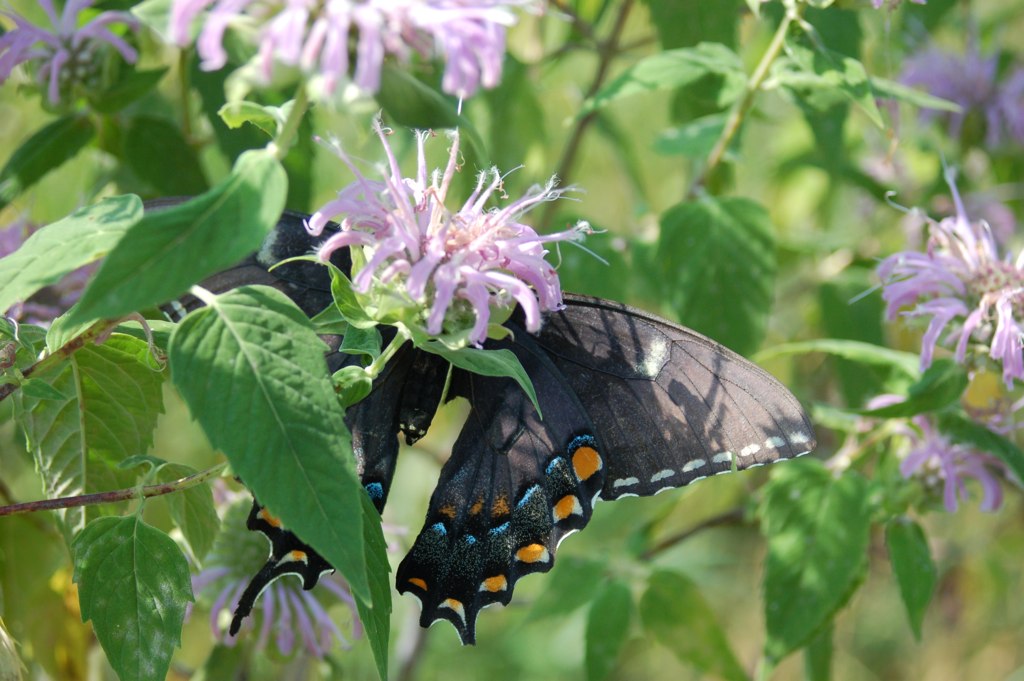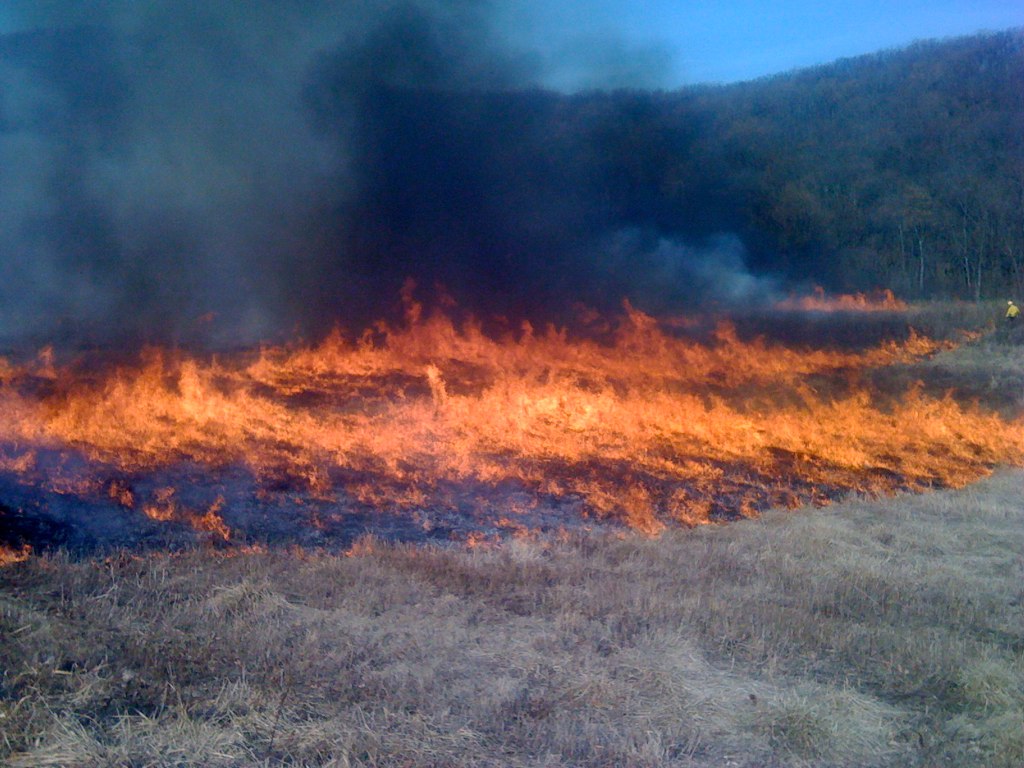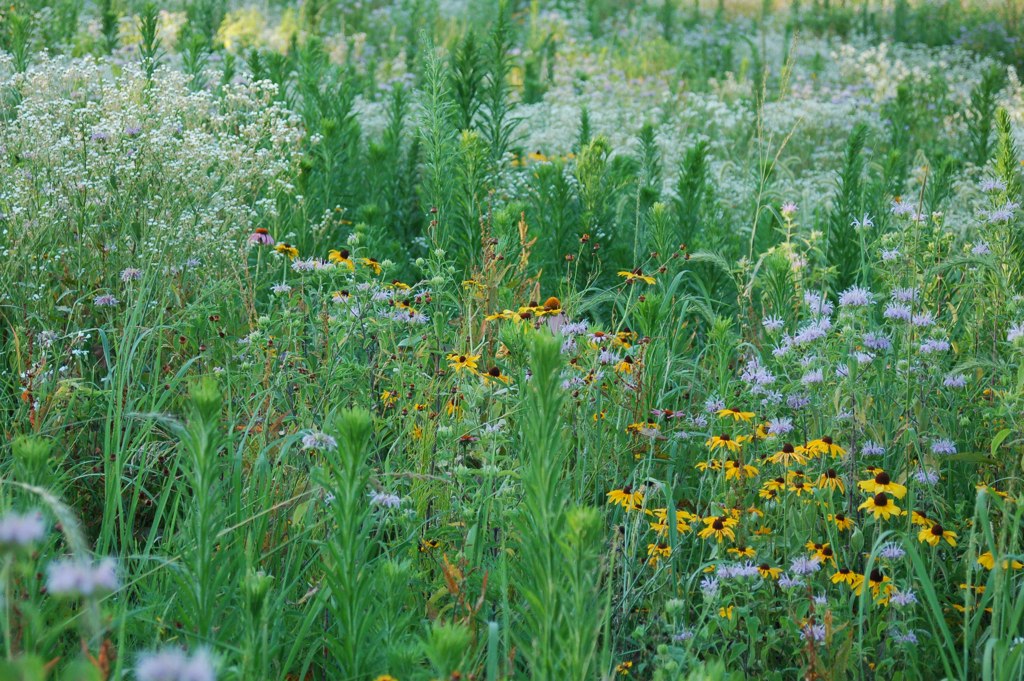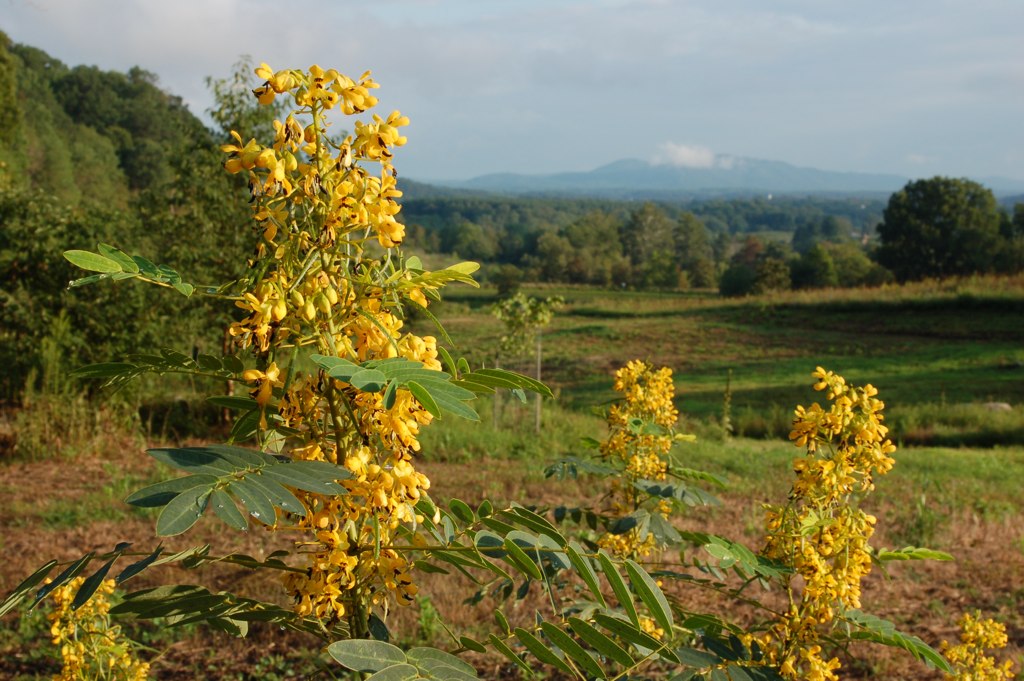Of Native Grasses, Wildflowers, and Heart-breaking Beauty
By: Amos S. Eno
Posted on:03/02/2011The Art and Science of Meadow Restoration on an Organic Farm
This is a continuation of yesterday’s blog about the Lapham family’s pursuit of economic and ecological health at Sunnyside Farm in Virginia.
“About 50% of our farm is wooded; we have 15 acres in vegetables, 3 in blackberries, and the orchard is 20 acres of apples, cherries, and Asian pears," says Nick Lapham, owner of Sunnyside Farm. "We’ve also taken 10 acres of meadows and converted them to native warm season grasses and wildflowers. The plan is to double or even triple that amount over time.
“A lot  of people don’t associate grassland species like little bluestem and Indian grass with the eastern U.S. Yet they are absolutely native here, and today grasslands are one of the most threatened habitats in the region. One of the biggest reasons is widespread conversion from the native warm season grasses to fescue, an invasive species that is basically worthless from a biodiversity standpoint and outcompetes native grasses and forbs.
of people don’t associate grassland species like little bluestem and Indian grass with the eastern U.S. Yet they are absolutely native here, and today grasslands are one of the most threatened habitats in the region. One of the biggest reasons is widespread conversion from the native warm season grasses to fescue, an invasive species that is basically worthless from a biodiversity standpoint and outcompetes native grasses and forbs.
Quality, Indefinable Yet Wholly Recognizable
“We are finding that even small areas of high quality grassland can be a bonanza for beneficial birds, insects and bats. We have been experimenting with different species mixes and restoration techniques, including the use of prescribed fire and, after much soul searching, the highly selective application of herbicides to eradicate invasives. We simply could not find a viable organic method and ultimately concluded that the environmental benefits of managing noxious weeds outweighed the negatives. Of course, we use no herbicides in our agricultural zones as we remain committed to growing our food organically.
“Increasin gly, I’m finding that restoring these meadows is as much art as science. Everyone I’ve talked to seems to have a different approach: how densely to seed, what species to use, when and how often to burn, whether to mow, etc. Additionally, much depends on historical land use and the surprises that lie in the seed bank. It’s still very much early days, but the process, though complicated, has been immensely rewarding.
gly, I’m finding that restoring these meadows is as much art as science. Everyone I’ve talked to seems to have a different approach: how densely to seed, what species to use, when and how often to burn, whether to mow, etc. Additionally, much depends on historical land use and the surprises that lie in the seed bank. It’s still very much early days, but the process, though complicated, has been immensely rewarding.
“What is exciting now is to begin to see the tangible benefits. I put up a covey of 12-15 Northern Bobwhite the other day in a warm season grass meadow we seeded in 2009. Once abundant in Rappahannock County, they are sadly quite uncommon today. While a few quail were here when we bought Sunnyside (thanks largely to a conservation-oriented neighbor with 360 acres in easement), it is such a joy to see them using this habitat and appearing in bigger numbers."
Not Reinventing the Wheel
“We’ve found that a network is so helpful in learning from others and not reinventing the wheel," continues Nick. "We badly want our experience to have value beyond Sunnyside. We hope that our successes and failures as well as our data will inform other landowners.”
our data will inform other landowners.”
Sunnyside Farm’s conservation efforts currently benefit from collaboration with organizations and programs such as:
Anyone interested in learning more should visit the Sunnyside website,
ThefarmatSunnyside.com where Nick says you are welcome to email him.
Taking the Long View - in Restoration and in LifeTragic events in Nick’s personal life are inseparably connected to his work at Sunnyside. Just fifteen months after his father’s death, Nick lost his son, Henry, at age four.
“I quit my job at World Wildli

fe Fund and found I needed the farm,” Nick says haltingly. “It has pulled me through. Virtually all I do here is inspired by Henry. In many ways, I see managing this place as a metaphor for raising him. While I cannot control the exact form Sunnyside takes, I can try my hardest to nurture it and set it on the best course I know how. What’s amazed me is how much I’ve come to appreciate the journey. When planting an oak or seeding a meadow, I realize it will be years or decades before its full potential is revealed. Perhaps it may never be. Yet I find the act of caring for it ample reward to embrace the patience that such an inherently long-term and uncertain endeavor requires.“
 Sign In
Sign In
 Sign In
Sign In
